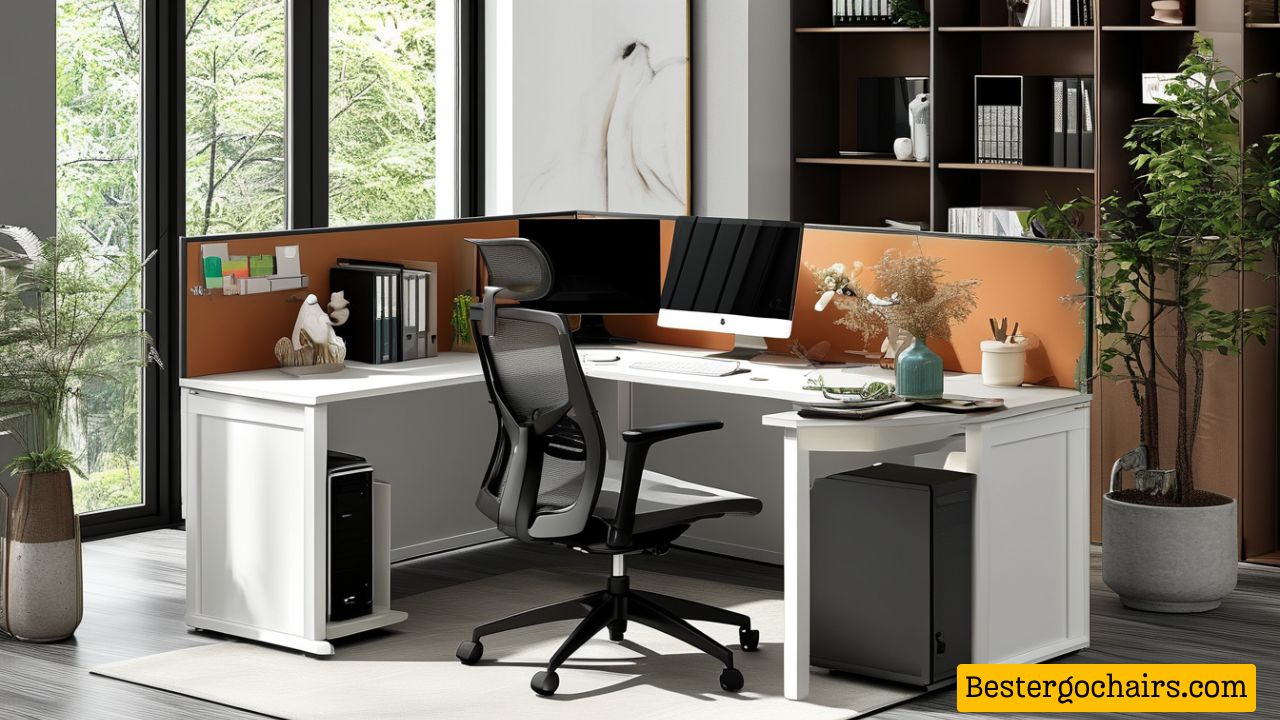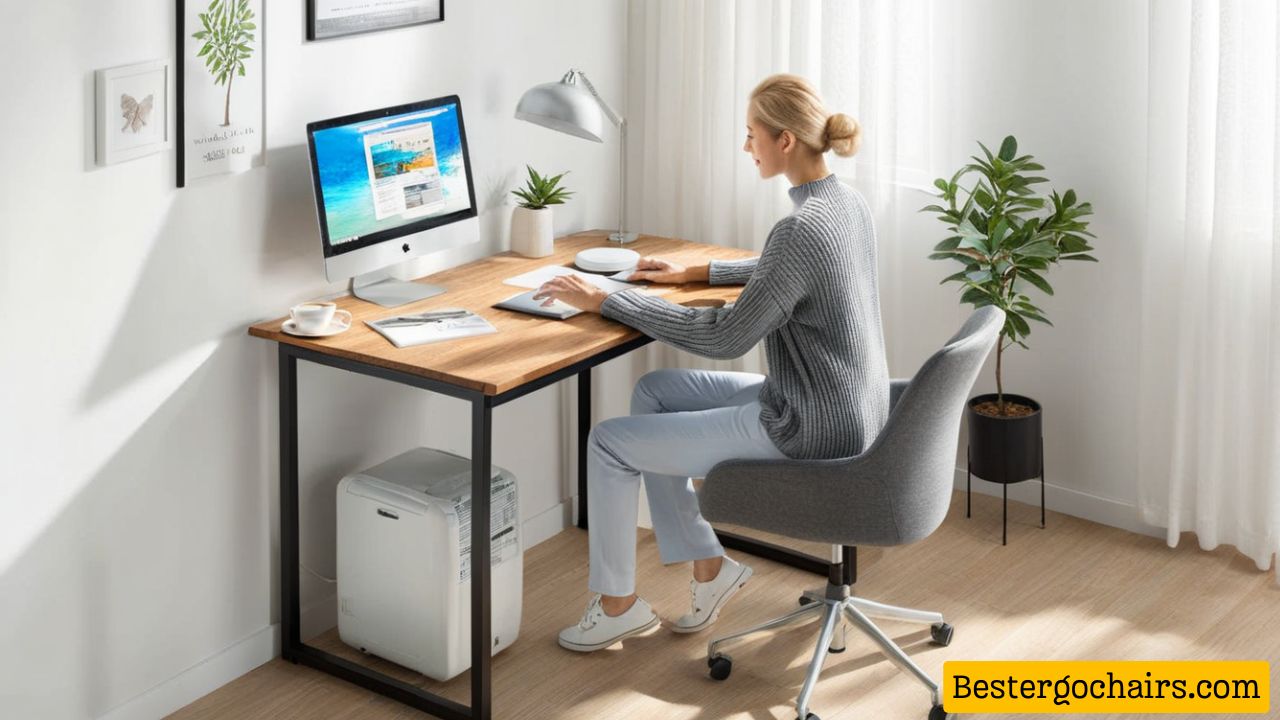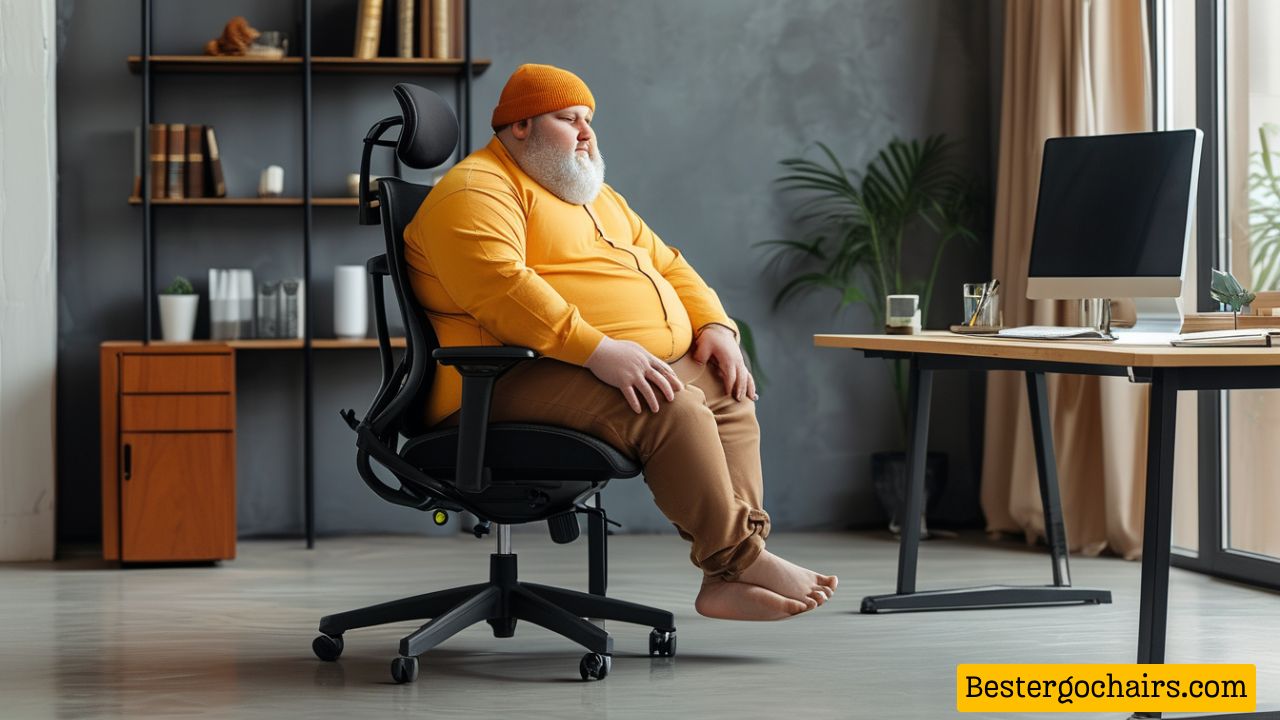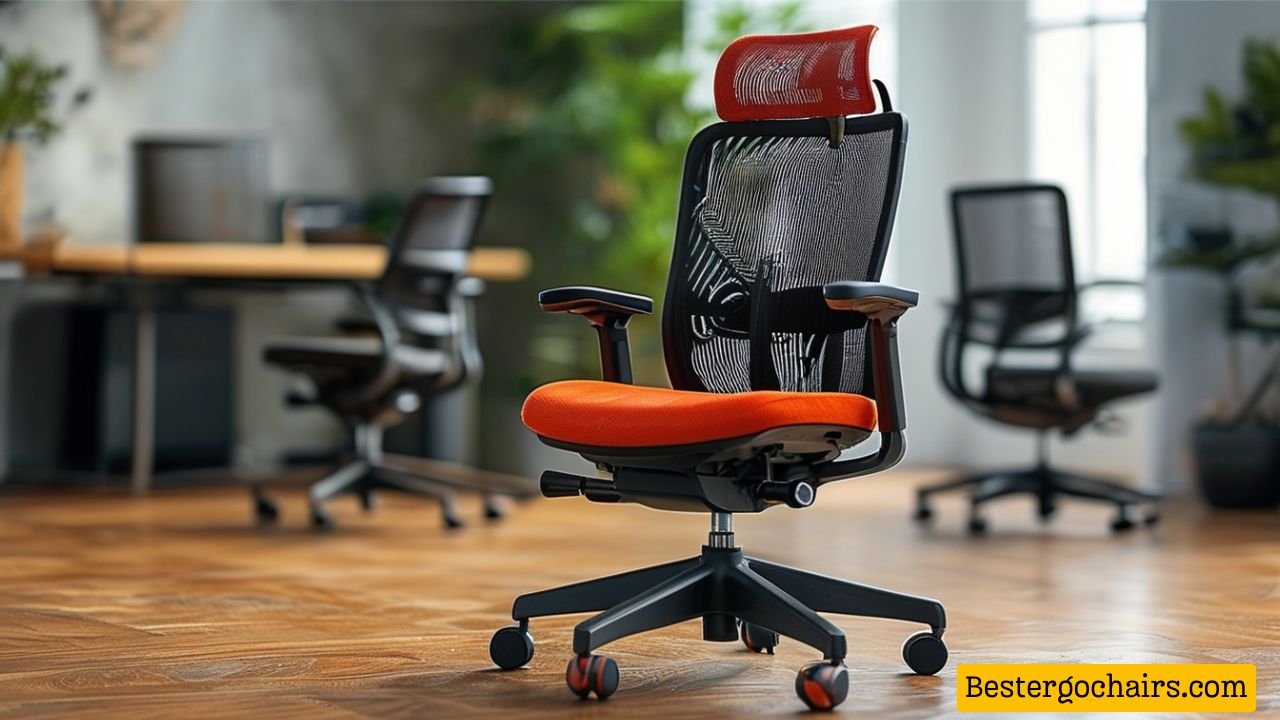Choosing the right chair to complement your ergonomic desk requires a thoughtful approach to ensure a truly harmonious and supportive work environment. This comprehensive guide explores the key factors to consider when pairing your ergonomic desk with the ideal chair.

Understanding the Synergy Between Desk and Chair
The goal is to create a balanced and supportive system that promotes proper posture, reduces strain, and enhances comfort throughout the workday. Think of it like a dynamic duo – each element plays a crucial role in supporting the other.
The Importance of Ergonomics
Ergonomics is the science of designing the workspace to fit the user’s needs. When we talk about ergonomic desks and chairs, we’re referring to furniture designed to support the body in a way that minimizes discomfort and maximizes efficiency. An ergonomic setup can significantly impact your health, particularly if you spend long hours working at a desk. Poor ergonomics can lead to musculoskeletal disorders, chronic pain, and decreased productivity.
Creating a Balanced Workspace
A well-paired ergonomic desk and chair create a balanced workspace that allows for fluid movement and comfort. The desk should accommodate the chair’s height and adjustability, while the chair should provide adequate support for the back and limbs. This balance is crucial for maintaining a neutral spine position, which is vital for preventing fatigue and discomfort during extended periods of sitting or standing.
The Role of Personalization
Every individual has unique needs based on their body type, work habits, and personal preferences. Therefore, personalization is key when selecting an ergonomic desk and chair combination. What works for one person may not work for another. Understanding your own requirements and how they align with the features of your desk and chair will help you create a workspace that feels tailored to you.
Desk Features: Setting the Foundation
To achieve optimal comfort, it’s essential to start with a solid foundation—your ergonomic desk. Here are some critical features to consider.
Height Adjustability
Height adjustability is perhaps the most crucial feature in ergonomic desks. The ability to raise or lower your desk allows you to find the perfect height that accommodates your chair and your body. Ideally, when seated, your elbows should be at a 90-degree angle, and your knees should also be at a right angle with your feet flat on the floor. This positioning helps reduce strain on your joints and supports good posture.
When paired with an adjustable chair, you can easily achieve this optimal ergonomic positioning. If your desk is too high or too low, it can lead to discomfort and potential long-term health issues. Therefore, investing in a desk that offers a wide range of height adjustments is essential for creating a comfortable workspace.
Work Surface Shape and Depth
The shape and depth of your work surface can significantly affect your comfort and productivity. Different shapes, such as L-shaped, U-shaped, or traditional rectangular desks, cater to various work habits and available space. For instance, corner desks can maximize space in smaller rooms, while larger desks provide ample room for multiple monitors or additional equipment.

Additionally, the depth of the desk should allow you to keep your monitor at an appropriate distance from your eyes. A deeper desk can also provide enough space for documents, writing materials, and other essentials without feeling cluttered. Consider your workflow and the types of tasks you perform daily when choosing the shape and depth of your desk.
Monitor and Keyboard Placement
Proper monitor and keyboard placement is critical for reducing eye strain and promoting good posture. Many ergonomic desks come equipped with integrated monitor stands or adjustable keyboard trays that allow you to position your screen at eye level. This positioning ensures that you don’t have to tilt your head up or down excessively, which can lead to neck strain.
Moreover, the keyboard should be placed at a height that allows your wrists to remain straight while typing. Some desks offer built-in keyboard trays that slide in and out, providing flexibility in positioning. Ensuring that both your monitor and keyboard are correctly placed will enhance your overall comfort and productivity.
Chair Features: Enhancing Comfort and Support
Once you’ve established a solid desk foundation, it’s time to focus on the chair. The right chair can make all the difference in your comfort levels throughout the day.
Adjustable Seat Height
An adjustable seat height is crucial for achieving proper seating posture. Your chair should be able to match the height of your desk, allowing your feet to rest flat on the floor and your knees to form a 90-degree angle. If your chair is too high or too low, it can lead to discomfort and even long-term health issues.
When testing chairs, sit down and adjust the height until you find a comfortable position. Ensure that your thighs are parallel to the ground, and there’s no pressure on the back of your knees. This adjustment is fundamental for maintaining circulation and preventing numbness or discomfort.
Lumbar Support
Lumbar support is essential for those who spend long hours seated. A chair with adjustable lumbar support can help maintain the natural curve of your spine, reducing the risk of back pain. Look for chairs that offer customizable lumbar support options, such as cushions or built-in adjustments, to tailor the support to your specific needs.
If you experience back pain or discomfort while sitting, consider adding a lumbar cushion to your chair. This addition can provide extra support and improve your overall comfort during long work sessions.
Adjustable Backrest
An adjustable backrest is another key feature to look for in an ergonomic chair. The ability to modify the angle of the backrest allows you to transition between sitting and reclining positions comfortably. This flexibility is important for preventing fatigue and promoting blood flow, especially during extended periods of sitting.
When trying out a chair, pay attention to how the backrest feels against your back. It should provide adequate support while allowing you to shift positions as needed. Finding a chair with a backrest that adjusts to your preferred angle will enhance your overall comfort.
Armrests
Armrests play a significant role in providing support for your shoulders and arms. Chairs with adjustable armrests enable you to achieve a comfortable typing position while working at your desk. Properly positioned armrests can alleviate muscle strain and tension in your upper body.
When selecting a chair, ensure that the armrests can be adjusted to a height that allows your shoulders to relax while typing. Additionally, consider whether the armrests can move inward or outward to accommodate your body width. This customization will help you find the most comfortable position for prolonged use.
Pairing the Perfect Tandem: A Step-by-Step Guide
Finding the right ergonomic desk and chair combination involves careful consideration and experimentation. Here’s a step-by-step guide to help you through the process.
Assess Your Needs and Preferences
Before diving into research, take a moment to assess your needs and preferences. Consider your work style, body size, and any specific postural issues you may have. Understanding these factors will guide you in selecting the best desk and chair for your unique situation.
Reflect on how you typically work. Do you predominantly sit, stand, or switch between the two? Knowing your work habits will help you choose a desk that accommodates your preferred style. Additionally, consider your body size and any specific postural challenges you face. This self-assessment will lay the groundwork for making informed decisions.
Research and Compare Desk and Chair Options
Once you have a clear understanding of your needs, it’s time to research and compare different desk and chair options. Explore ergonomic desks that offer adjustable height, various work surface shapes, and features like monitor stands and keyboard trays.
For chairs, look for models with adjustable seat height, lumbar support, adjustable backrests, and armrests. Consider breathable materials like mesh or fabric, and explore options like memory foam or adjustable seat pan tilting. Take your time to read reviews and gather information about different brands and models to find the best fit for you.
Consider the Synergy
As you narrow down your options, consider the synergy between your desk and chair. Height compatibility is crucial; ensure that the chair can adjust to a comfortable height that matches your desk. Additionally, evaluate the backrest support of the chair in relation to the desk’s features.
Armrest placement is another important factor. Opt for chairs with adjustable armrests that allow for a comfortable typing position while working at your desk. This attention to detail will help you create a cohesive and ergonomic workspace.
Test and Experiment
Whenever possible, test both the desk and chair in a showroom or at home. Sit for a few minutes in different postures and adjust the features to find the most comfortable combination. Pay attention to how your body feels in various positions, and don’t hesitate to make adjustments as needed.
Once you have your furniture set up, spend time experimenting with the different settings. Fine-tune the height, backrest angle, and armrest position to personalize your workspace. Listen to your body’s feedback and make adjustments accordingly. This experimentation will help you discover the optimal configuration for your comfort and productivity.
Beyond the Basics: Key Features and Considerations
While finding the right desk and chair is essential, there are additional features and considerations that can further enhance your ergonomic setup.
Sit-Stand Desks
Sit-stand desks offer flexibility by allowing you to switch between sitting and standing positions throughout the day. This versatility promotes better circulation, reduces fatigue, and can even boost productivity. If you find yourself feeling sluggish after prolonged sitting, a sit-stand desk may be the solution you need.

When using a sit-stand desk, remember to adjust the height according to your chair and body proportions. Transitioning between sitting and standing should feel seamless and comfortable. Incorporating this feature into your workspace can lead to improved energy levels and overall well-being.
Ergonomic Keyboard and Mouse
Complement your desk and chair setup with ergonomically designed input devices. An ergonomic keyboard and mouse can help reduce strain on your wrists and hands, enhancing your overall comfort while working. Look for keyboards with a split design or a slight incline, which can promote a more natural hand position.
Similarly, consider an ergonomic mouse that fits comfortably in your hand and encourages a neutral wrist position. These small adjustments can make a significant difference in your comfort levels, especially during long hours of computer use.
Lighting and Accessories
Proper lighting is essential for creating a comfortable workspace. Invest in adjustable desk lamps that provide adequate illumination without causing glare on your screens. Good lighting can reduce eye strain and contribute to a more pleasant working environment.
Additionally, consider accessories like footrests or monitor stands to further personalize your setup. A footrest can help improve circulation and reduce pressure on your legs, while a monitor stand can elevate your screen to eye level, promoting better posture. These accessories can enhance your overall comfort and productivity.
Conclusion
Pairing your ergonomic desk with the right chair requires a thoughtful and holistic approach. By considering your individual needs, preferences, and the specific features of each piece of furniture, you can create a truly ergonomic and comfortable workspace that enhances your overall well-being. Remember: it’s not just about the furniture; it’s about creating a harmonious system that supports your body and promotes a healthy and productive work environment. Invest in a perfect ergonomic duo and reap the rewards of optimal comfort and well-being.





